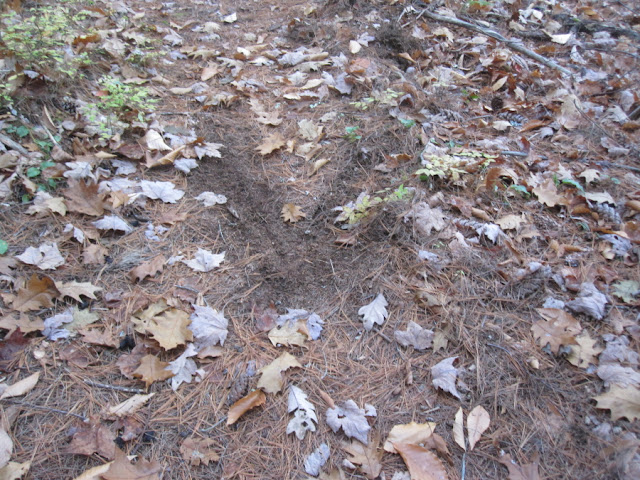There's no denying it's November now. A few frosty mornings this week betrayed Jack Frost on some early visits to the lake.
 |
| There are now far more drab leaves than bright ones around the lakes. |
 |
| Especially when tinged with frost like these oak leaves. |
One chilly morning there was even a thin skim of ice in some of the more protected marshes on Lake Wicwas.
 |
| The first bit of ice appeared on November 7th. |
But the days have been nice enough to get out and observe the many changes that take place this time of year. Something I keep my eye out for in the November forest are signs that the rut has begun - when the white tail deer, in particular the bucks, increase their activity. Some of the signs to watch for are bark rubbed off trees at waist-height by antlers, and scrapes on the ground made by hooves, both of which are used to mark territory with visual and olfactory indicators. So far this fall I've seen only scrapes, but along one short stretch of trail there were half a dozen examples.
 |
| A buck repeatedly marked this trail with scrapes. |
A buck will scrape up the leaves and a bit of soil with their front hooves and throw the material quite a few feet behind it.
 |
| Leaves and duff thrown right across the trail. |
 |
| Sharp hooves dig in to release aromatics within the soil. |
This scrape shows the typical V-shaped pattern of the scrape they make with their front hooves:
The exposed ground will leave a pungent odor as well as a visual clue that tells every doe he is in the area, and the buck will often urinate in the scrape to reinforce the message. This also leaves a proclamation to other bucks that he has claimed this territory and the resident does for himself. The number of scrapes tells me this buck wants to leave no doubt about who owns this piece of the forest.
On what may have been my last paddle on the lake this fall I thought I saw a loon take off in the distance in front of me, but it circled around and returned to fly almost right over me which let me see that it was a cormorant rather than a loon.
 |
| Double-crested cormorant |
It did seem like it took wing in less distance than a loon typically requires.
The low sun even at high noon reminds one that it's November even it if feels like August.
 |
| Seven minutes after noon and the sun is still low in the sky. |
It's always sad to think I might be on my last liquid-lake trip of the year, but at least it was a beautiful day for it.
 |
| Not many of these days left this year. |


No comments:
Post a Comment